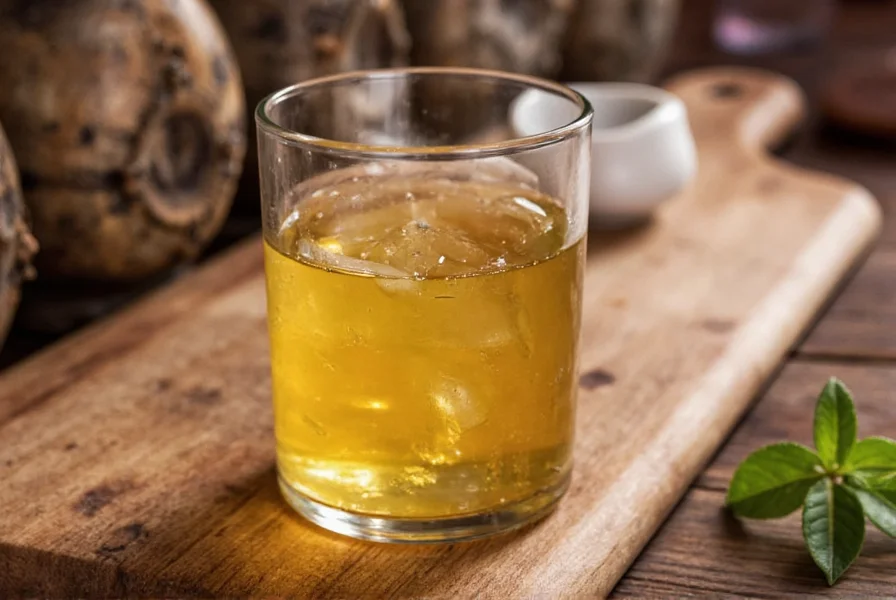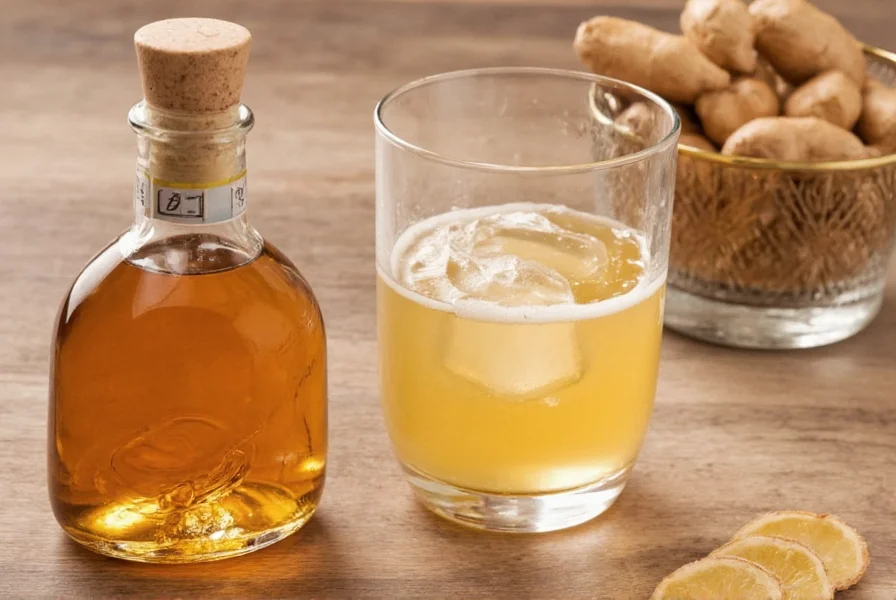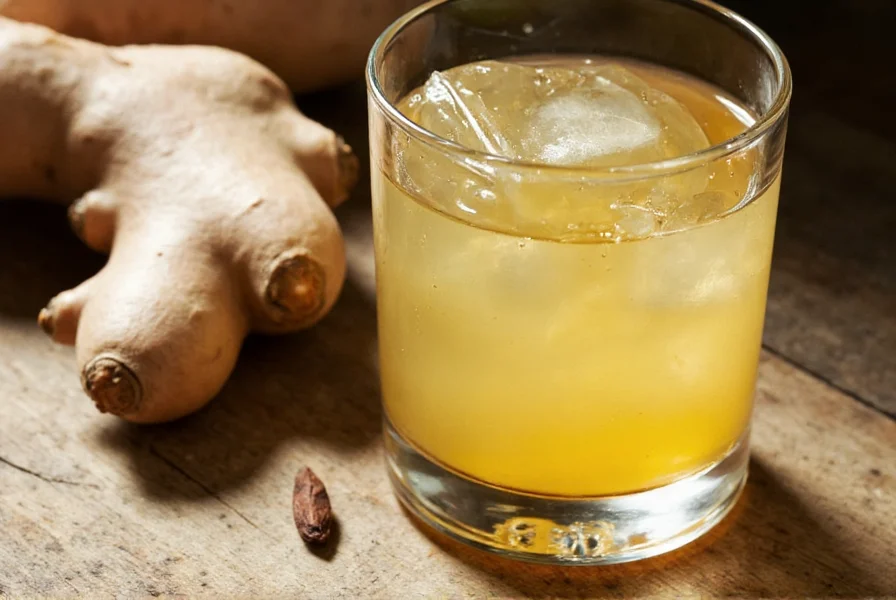Ginger liquor stands as one of the most versatile spirit-based ingredients in modern mixology and culinary arts. This distinctive beverage captures the fiery essence of fresh ginger while balancing it with subtle sweetness and complex spice notes. Understanding its proper use can transform ordinary drinks and dishes into extraordinary experiences.
What Exactly Is Ginger Liquor?
Ginger liquor, sometimes referred to as ginger liqueur, represents a category of distilled spirits where ginger root serves as the primary flavoring agent. The production process involves macerating fresh ginger in a neutral spirit base, then often adding sugar and additional botanicals to create a balanced final product.
The key distinction between ginger liquor and similar products lies in its alcohol content and production method. While ginger beer and ginger ale are carbonated soft drinks with minimal to no alcohol, ginger liquor contains significant alcohol content as a result of distillation or extended maceration processes. This makes it suitable for both sipping neat and mixing in cocktails that require a robust ginger flavor without carbonation.

Historical Background of Ginger Liquor
Ginger's journey as a flavoring agent spans centuries, with historical records showing its use in medicinal tonics dating back to ancient China and India. European traders introduced ginger to the Western world during the spice trade era, where it quickly gained popularity both as a digestive aid and flavor enhancer.
The specific development of ginger liquor as we know it today emerged during the 19th century, when distillers began experimenting with infusing spirits with various botanicals. Traditional recipes often included additional spices like cinnamon, cloves, and citrus peel to complement the ginger's natural heat.
Production Process: Commercial vs. Homemade
Commercial ginger liquor production typically follows a multi-step process that begins with selecting high-quality ginger root. The ginger undergoes thorough cleaning and peeling before being grated or finely chopped. It's then macerated in a neutral spirit (usually vodka or grain alcohol) for several days to extract flavor compounds.
After the initial maceration period, producers often add a simple syrup made from sugar and water to balance the intense heat of the ginger. Some premium brands employ a second distillation process to refine the flavor profile further. The final product is filtered and bottled at the desired proof, typically between 40-70 proof (20-35% alcohol by volume).
| Characteristic | Ginger Liquor | Ginger Beer | Ginger Ale |
|---|---|---|---|
| Alcohol Content | 20-35% ABV | 0-0.5% ABV | 0% ABV |
| Production Method | Distillation/Maceration | Fermentation | Carbonation |
| Flavor Profile | Intense, spicy, complex | Sharp, fiery, robust | Mild, sweet, subtle |
| Primary Use | Cocktails, cooking | Mixers, non-alcoholic drinks | Mixers, non-alcoholic drinks |
Flavor Profile and Sensory Characteristics
Ginger liquor delivers a complex sensory experience that begins with an immediate aromatic burst of fresh ginger. High-quality products showcase a balance between the root's natural pungency and complementary sweet and spicy notes. The heat level varies significantly between brands, with some offering a gentle warmth while others deliver a pronounced kick that lingers on the palate.
When evaluating ginger liquor, consider these key elements:
- Aroma: Should feature fresh ginger with possible hints of citrus, spice, or vanilla
- Palate: Initial sweetness followed by ginger's characteristic heat
- Mouthfeel: Should be smooth without harsh alcohol burn
- Finish: Length and quality of the ginger warmth after swallowing
Culinary Applications Beyond Cocktails
While many associate ginger liquor primarily with cocktail creation, its culinary applications extend far beyond the bar. Chefs value this ingredient for its ability to add depth and complexity to both sweet and savory dishes. The alcohol content helps carry ginger's volatile flavor compounds throughout a dish, creating more integrated flavors than fresh ginger alone.
Consider these creative uses for ginger liquor in cooking:
- Add to marinades for poultry or pork to enhance flavor penetration
- Incorporate into glazes for roasted vegetables or meats
- Use in place of vanilla extract in baked goods for a spicy twist
- Enhance fruit compotes and sauces for desserts
- Add complexity to stir-fry sauces and Asian-inspired dishes
Signature Cocktails Featuring Ginger Liquor
Ginger liquor serves as the foundation for numerous classic and contemporary cocktails. Its versatility allows it to pair well with citrus, herbs, and other spirits, creating balanced drinks with distinctive character.
Ginger Mule
This variation on the Moscow Mule substitutes ginger liquor for the traditional ginger beer, creating a more intense ginger experience without carbonation.
- 2 oz vodka
- 1 oz ginger liquor
- 0.5 oz fresh lime juice
- Lime wheel for garnish
Combine ingredients in a shaker with ice, shake vigorously, and strain into a copper mug filled with fresh ice. Garnish with a lime wheel.
Ginger Old Fashioned
A sophisticated twist on the classic cocktail that incorporates ginger's warmth.
- 2 oz bourbon or rye whiskey
- 0.5 oz ginger liquor
- 2 dashes Angostura bitters
- Orange twist for garnish
Combine all ingredients in a mixing glass with ice, stir until well-chilled, then strain into a rocks glass with a large ice cube. Express orange oil over the drink and add the twist.

Creating Homemade Ginger Liquor
Making ginger liquor at home allows for complete control over flavor intensity and sweetness. This simple recipe produces a high-quality ginger liqueur that rivals commercial products.
Basic Homemade Ginger Liquor Recipe
- 1 cup fresh ginger root, peeled and finely grated
- 2 cups high-proof vodka (at least 80 proof)
- 1 cup water
- 1 cup sugar
- Optional: 1 cinnamon stick, 3 whole cloves, zest of one orange
- Combine grated ginger and vodka in a glass jar with a tight-fitting lid
- Add any optional spices
- Seal tightly and shake vigorously
- Store in a cool, dark place for 3-5 days, shaking daily
- Strain through a fine-mesh sieve lined with cheesecloth
- Prepare simple syrup by heating water and sugar until dissolved
- Cool syrup completely, then mix with ginger-infused vodka
- Bottle and store in a cool, dark place for at least one week before use
The aging period allows flavors to mellow and integrate. For a more intense ginger flavor, increase the maceration time or use more ginger. Adjust sweetness to your preference by varying the sugar amount in the simple syrup.
Proper Storage and Shelf Life
Ginger liquor maintains excellent stability due to its alcohol content. When stored properly in a cool, dark place with the bottle tightly sealed, commercial ginger liquor typically remains at peak quality for 2-3 years. Homemade versions may have a slightly shorter shelf life of 1-2 years due to variations in production methods.
Refrigeration isn't necessary but can help preserve flavor integrity over extended periods. Avoid storing ginger liquor near heat sources or in direct sunlight, as these conditions accelerate flavor degradation. If you notice significant color changes, cloudiness, or off-odors, it's time to replace the bottle.
Frequently Asked Questions
What's the difference between ginger liquor and ginger beer?
Ginger liquor is a distilled alcoholic beverage containing 20-35% alcohol by volume, while ginger beer is a non-alcoholic carbonated beverage made through fermentation. Ginger liquor delivers a more concentrated ginger flavor without carbonation, making it suitable for cocktails where alcohol content is desired.
Can I substitute ginger liquor for fresh ginger in recipes?
Yes, but with adjustments. One tablespoon of ginger liquor generally equals about 1 teaspoon of freshly grated ginger. Remember that ginger liquor adds both flavor and alcohol, so consider reducing other liquids in your recipe accordingly. The substitution works particularly well in sauces, marinades, and baked goods.
How should I store homemade ginger liquor?
Store homemade ginger liquor in airtight glass bottles away from direct sunlight and heat sources. A cool, dark cupboard works well for short-term storage (up to 6 months), while refrigeration extends shelf life to 1-2 years. Always ensure the container is properly sealed to prevent oxidation and flavor degradation.
What cocktails work best with ginger liquor?
Ginger liquor enhances many classic cocktails including Mules, Old Fashioneds, and Whiskey Sours. It pairs particularly well with bourbon, rye, and dark rum. For refreshing options, try it in a Ginger Margarita or a Spiced Cosmopolitan. The spirit's versatility makes it suitable for both stirred and shaken cocktails across various flavor profiles.
Is ginger liquor gluten-free?
Most ginger liquors are naturally gluten-free as they're typically made from distilled spirits derived from non-gluten sources like sugarcane or grapes. However, some brands may use grain-based alcohol or add flavorings that contain gluten. Always check the label or contact the manufacturer if you have gluten sensitivities, as production methods can vary between brands.











 浙公网安备
33010002000092号
浙公网安备
33010002000092号 浙B2-20120091-4
浙B2-20120091-4